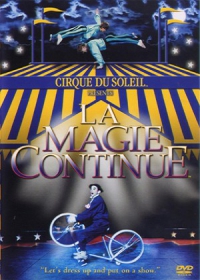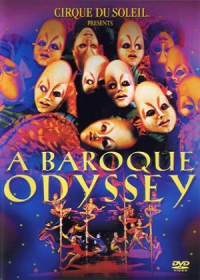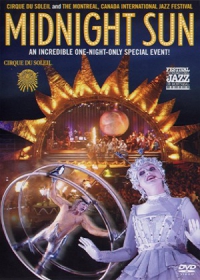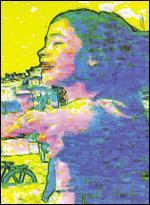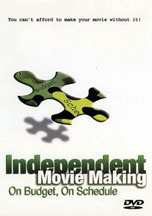| 005 |
|
20141013145456.0 |
| 010 |
0
|
|a37567-K|bv.1:DVD|dNT11200元
|
| 010 |
0
|
|a37568-K|bv.2:DVD|dNT11200元
|
| 010 |
0
|
|a37569-K|bv.3:DVD|dNT11200元
|
| 010 |
0
|
|a37570-K|bv.4:DVD|dNT7800元
|
| 100 |
|
|a20141006d2007 m y0chiy09 e
|
| 101 |
0
|
|aeng|jeng
|
| 102 |
|
|aus
|
| 115 |
|
|ac224baioxbuz zzzzb
|
| 200 |
1
|
|aSex, censorship and the silver screen
|
| 204 |
0
|
|avideorecording
|
| 205 |
|
|aPublic performance rights granted
|
| 210 |
|
|aNew York, N.Y.|cFilms for the Humanities & Sciences|cFilms Media Group|d2007
|
| 215 |
0
|
|a4 videodisc (224 min.)|csd., col.|d4 3/4 in.
|
| 327 |
1
|
|aDisc 1:The early decades|aDisc 2:From the Depression to WWII|aDisc 3:The 1950s and '60s|aDisc 4:The late 1960s to the '90s
|
| 330 |
|
|aDisc 1:While the earliest motion pictures were admired simply fortheir novelty, viewers soon demanded more than raw footage of trains, sneezes, and other random subjects. This program describes the discovery of sex as a surefire cinematic attraction and the outrages it provoked among religious and civic authorities during Hollywood's formative years. Documenting the rise of William Hays as the arbiter of movie morality-and the studio system's answer, after the Fatty Arbuckle fiasco, to the threat of government censorship-the program explores the artistic and cultural shock waves created by Theda Bara, Rudolph Valentino, Erich Von Stroheim, Greta Garbo, Marlene Dietrich, Jean Harlow, Busby Berkeley, Mae West, Barbara Stanwyck, and many other early film luminaries. Contains footage from A Fool There Was, Possessed, Klondike Annie, and more.
|
| 330 |
|
|aDisc 2:In what many see as Hollywood's Golden Age, the offices of William Hays and Joseph Breen worked overtime to combat sexuality and subversion in American movies. This program examines the products of that era-films that danced around the standards of the Production Code and paved the way for increasingly daring storytelling and images. From the modesty of It Happened One Night to the shocking and nearly prohibited use of "damn" in Gone with the Wind to the ambiguous morality of Double Indemnity, the program surveys the achievements of Clark Gable, Hedy Lamarr, Errol Flynn, Lana Turner, Rita Hayworth, Jane Russell, Cecil B. DeMille, Frank Capra, Billy Wilder, Preston Sturges, and other screen artists. The forces that led to Hays's dismissal and the weakening of the Code are discussed in depth.
|
| 330 |
|
|aDisc 3:After World War II, the wholesomeness of American movies faced a tidal wave of change-from outside, as a growing number of provocative foreign films made their way to the U.S., and from within, as car culture flowered and drive-in theaters sprang up across the country. This program documents the period, from the birth of art house cinema to the ascent of boundary-busting American actors and directors like Marlon Brando and Stanley Kubrick. Studying the shifting moral standards that Hollywood, Italian cinema, and the French New Wave signaled-and which the Catholic Legion of Decency resisted tooth and nail-the program features groundbreaking scenes from The Miracle, Baby Doll, Lolita, and other films. The 1952 Supreme Court decision granting First Amendment protection to motion pictures is also highlighted.
|
| 330 |
|
|aDisc 4:In 1965, the Catholic Legion of Decency closed its doors; the following year, the Hays Code was scrapped. This program looks at the cinematic milestones which prompted these events and the age of freewheeling film artistry that ensued, despite attempts at censorship issuing from the highest political level. Shedding light on the release of The Pawnbroker and director Sidney Lumet's historic confrontation with the Legion, the program showcases the forging of the MPAA rating system and the eventual association of the ""X"" classification with pornography-notwithstanding the artistic triumphs of Midnight Cowboy and A Clockwork Orange. The impact of AIDS, the struggle against child pornography, and the creation of the NC-17 rating are also illuminated.
|
| 517 |
1
|
|aThe early decades|zeng
|
| 517 |
1
|
|aFrom the Depression to WWII|zeng
|
| 517 |
1
|
|aThe 1950s and '60s|zeng
|
| 517 |
1
|
|aThe late 1960s to the '90s|zeng
|
| 517 |
1
|
|a性﹑審查與電影|e電影工業早期階段|zchi
|
| 517 |
1
|
|a性﹑審查與電影|e從經濟大蕭條到二次世界大戰|zchi
|
| 517 |
1
|
|a性﹑審查與電影|e1950和60年代|zchi
|
| 517 |
1
|
|a性﹑審查與電影|e1960年到晚期90年代
|
| 606 |
|
|aSex in motion pictures|2lc
|
| 606 |
|
|aMotion pictures|xCensorship|2lc
|
| 676 |
|
|a791.43|v22
|
| 710 |
02
|
|aFilms for the Humanities & Sciences (Firm)
|
| 805 |
|
|sVDR|r1120000|aKPI|bKPI|c472330|d791.43 F462|kV.1|n1023983811|pEDVD
|
| 805 |
|
|sVDR|r1120000|aKPI|bKPI|c472331|d791.43 F462|kV.2|n1023983811|pEDVD
|
| 805 |
|
|sVDR|r1120000|aKPI|bKPI|c472332|d791.43 F462|kV.3|n1023983811|pEDVD
|
| 805 |
|
|sVDR|r780000|aKPI|bKPI|c472333|d791.43 F462|kV.4|n1023983811|pEDVD
|
| 806 |
|
|bjia
|
 館藏資料查詢 > 詳細資料
館藏資料查詢 > 詳細資料
 館藏資料查詢 > 詳細資料
館藏資料查詢 > 詳細資料

 借閱次數:
借閱次數: 

